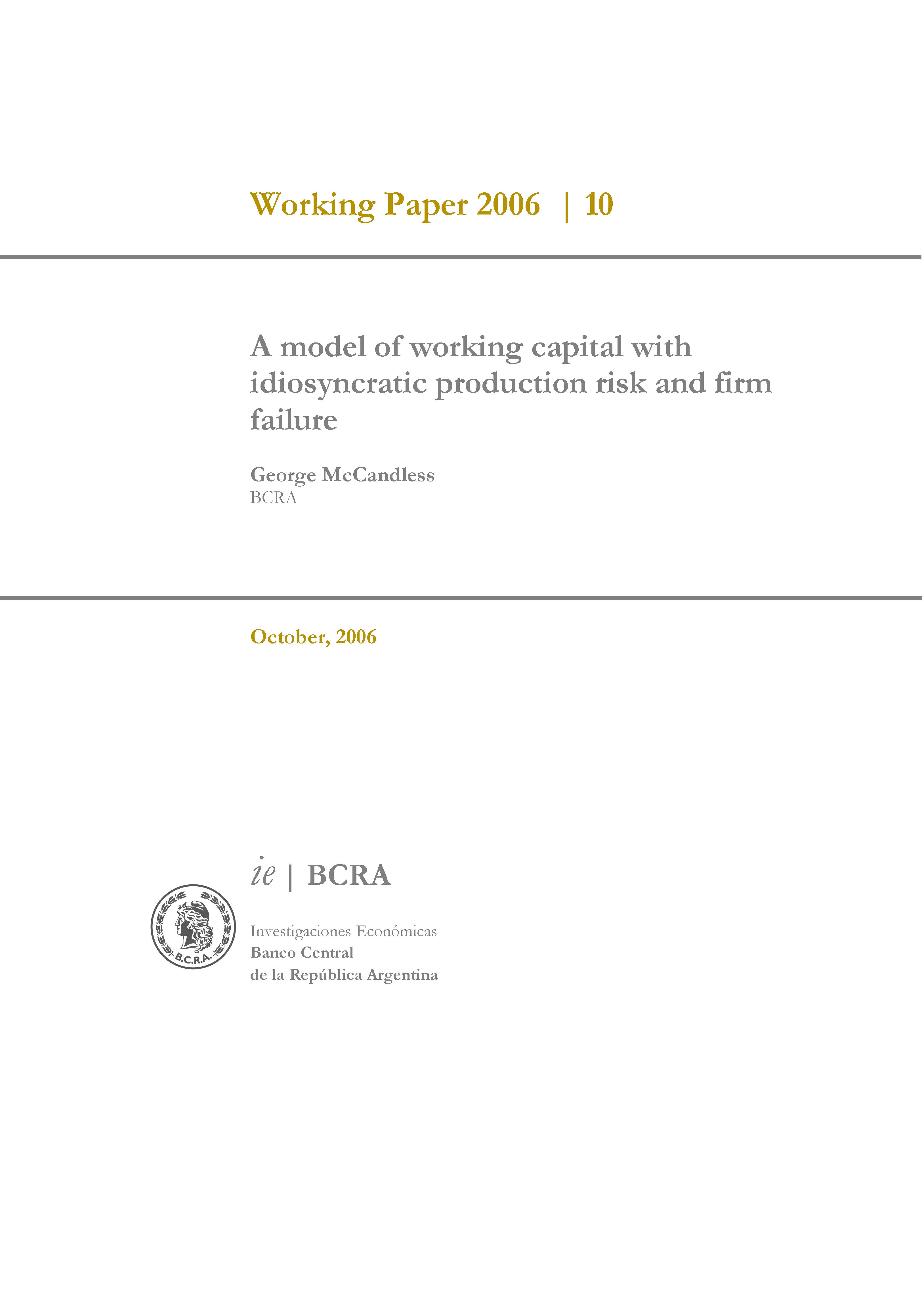A Model of Working Capital with Idiosyncratic Production Risk and Firm Failure
Working papers | 2006 | N 10
Keywords:
Capital regulations, Cash in advance models, Idiosyncratic shocksAbstract
This paper is a contribution to the literature on possible pro-cyclical effects of capital rules under Basil 2 capital regulations. The addition of both idiosyncratic uncertainty and risk averse managers to a cash-in advance model with financial intermediaries that finance working capital changes the way that the interest rate paid by borrowers responds to technology shocks and the correlation of these interest rates with output. Without idiosyncratic uncertainty, the interest rate for working capital borrowed by the firms is positively, and highly, correlated with output. Once idiosyncratic technology shocks are added, the correlation between the interest rate for working capital borrowed by the firms and output becomes highly negatively correlated. In stationary states, increases in the idiosyncratic shocks cause the risk averse firm managers to produce at levels where average total costs are well below average output, providing them with a partial cushion against a very low idiosyncratic shock. When absolute risk aversion is high, the effect is to dampen the effects of monetary shocks in the economy with idiosyncratic risk, but when absolute risk aversion is low, the effects of monetary shocks on real variables is higher, the larger the idiosyncratic risk.


